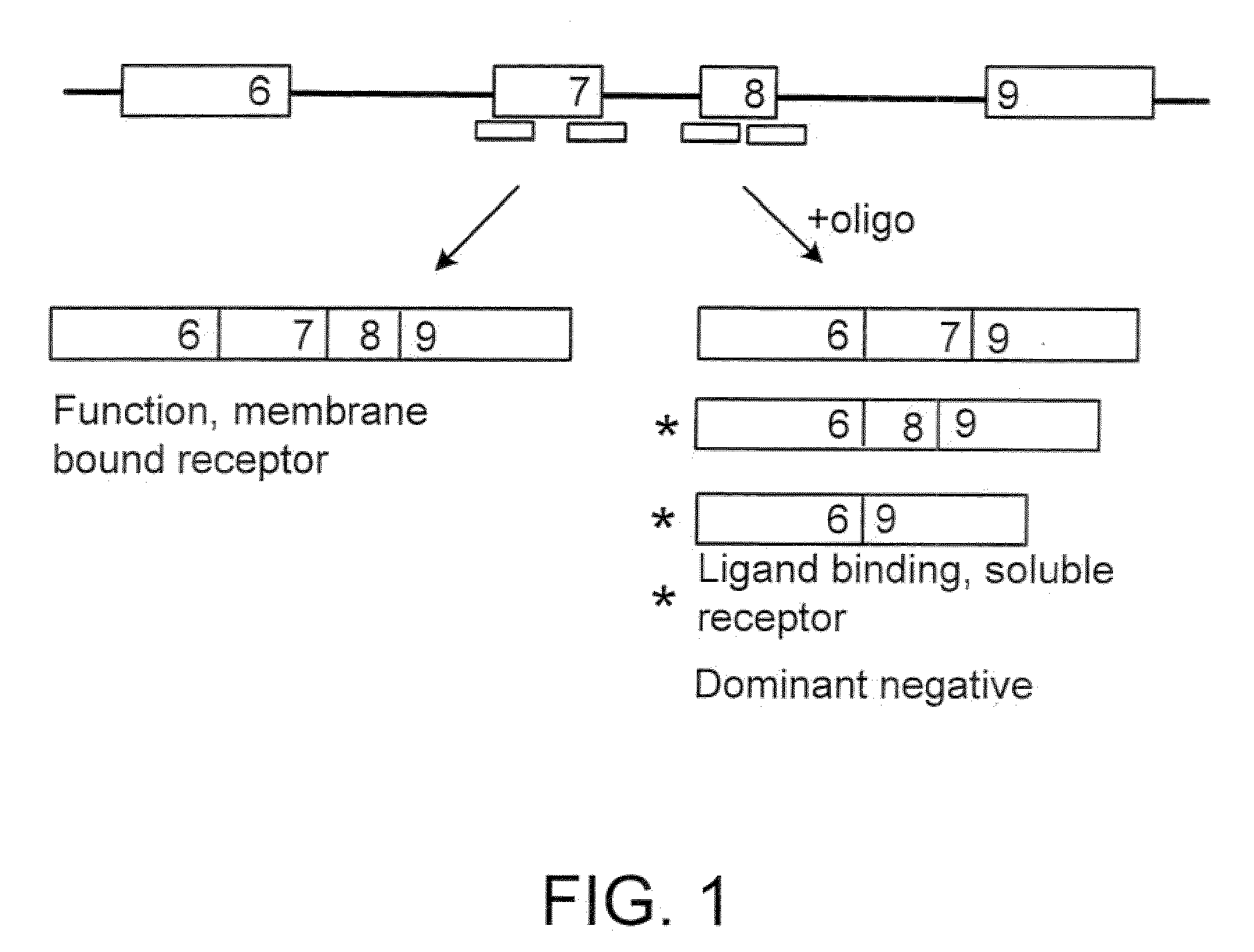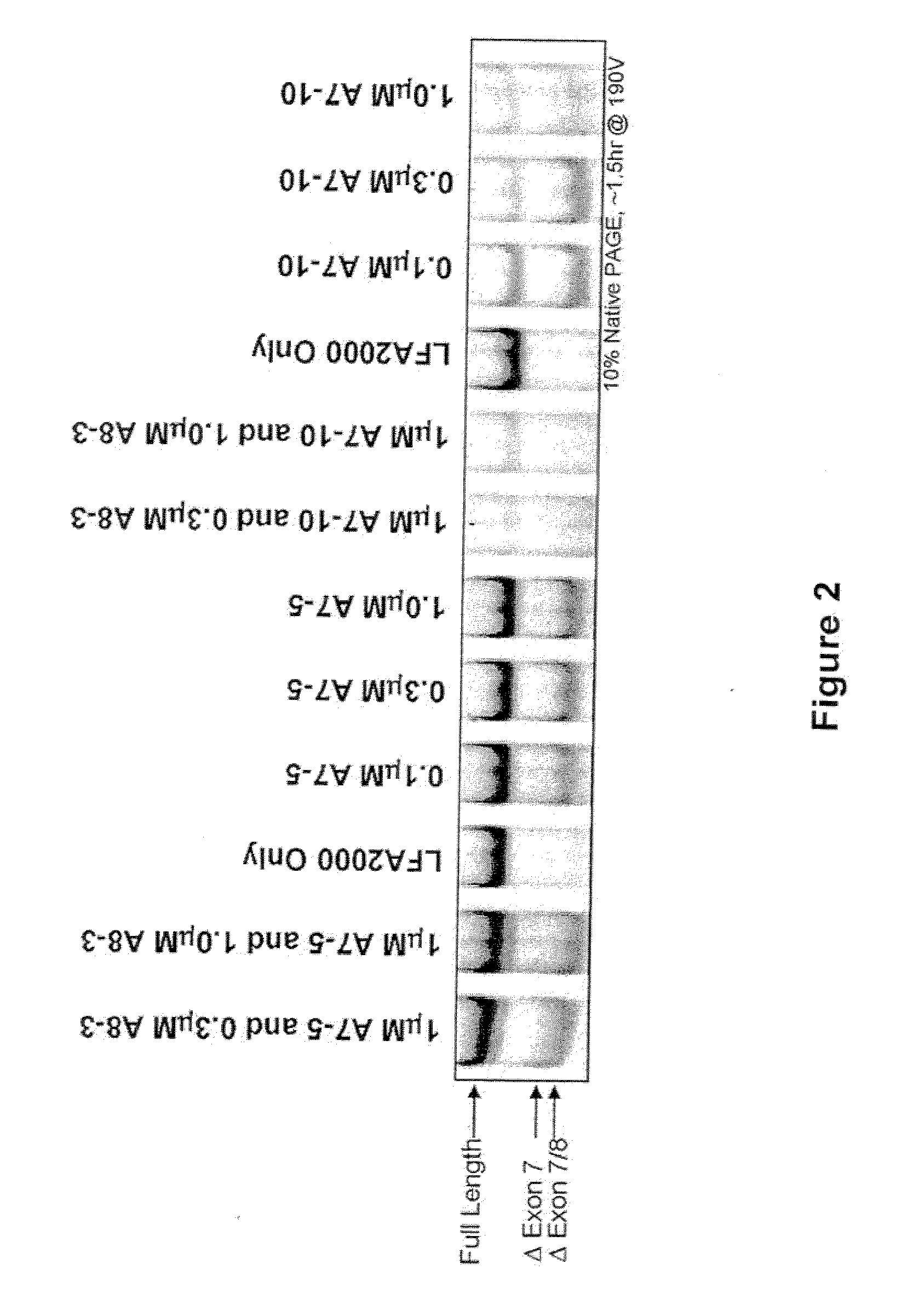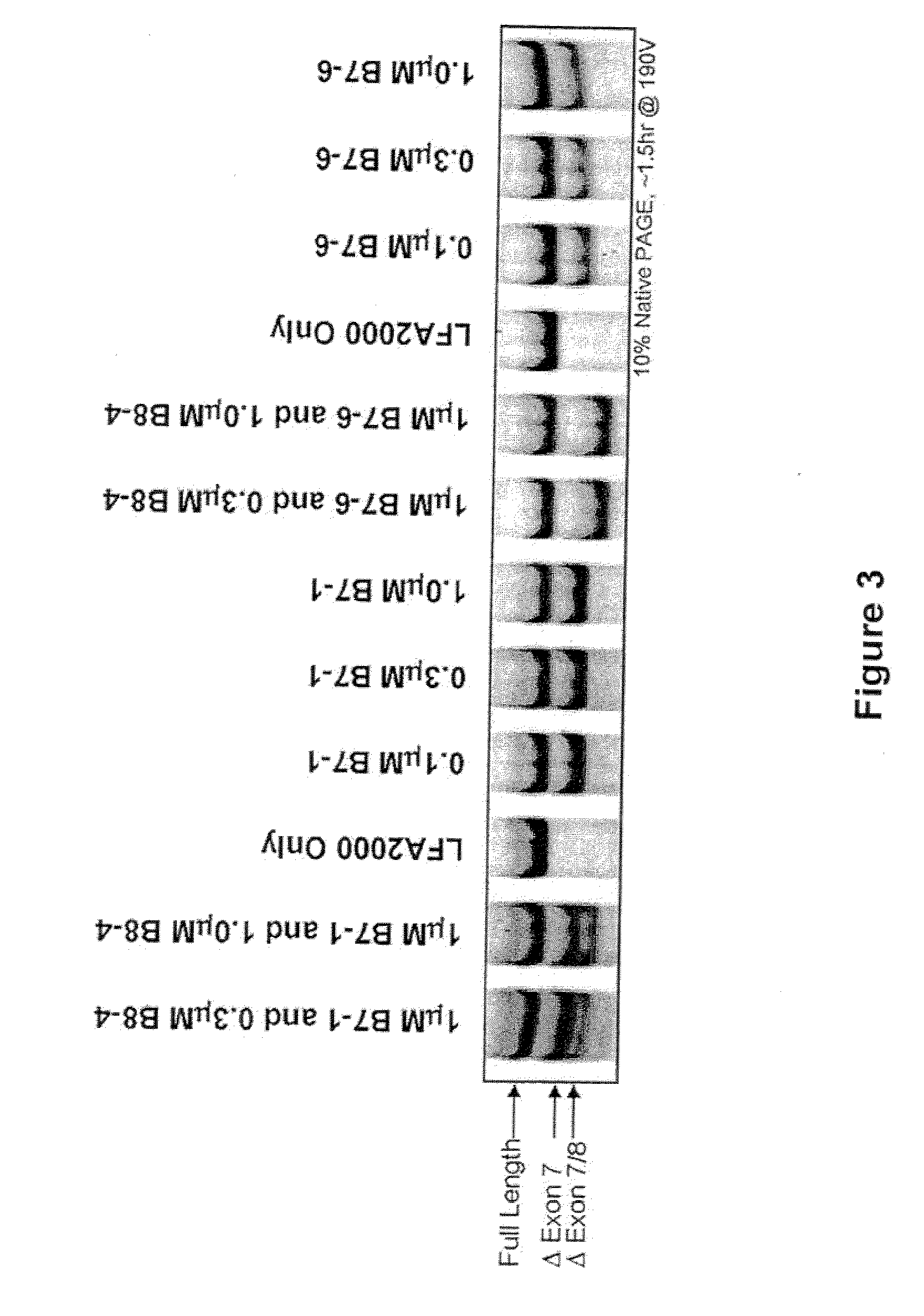Splice Switching Oligomers for TNF Superfamily Receptors and their Use in Treatment of Disease
a superfamily receptor and splice switching technology, applied in the field of splice variants of tnfalpha receptors, can solve the problems of multiple organ failure, unstable translation product of mrna, and inability to teach or provide any guidance as to splice elements or regions of cd40, and achieve the effect of reducing the amount of the integral membrane form
- Summary
- Abstract
- Description
- Claims
- Application Information
AI Technical Summary
Benefits of technology
Problems solved by technology
Method used
Image
Examples
example 1
Materials and Methods
[0453]Oligonucleotides. All uniformly modified 2′-O-methyl-ribonucleoside-phosphorothioate (2′-OMe) 20-mers were synthesized by Trilink Biotechnologies, San Diego, Calif. Their sequences are listed in Table 1. Tables 2 and 3 show the sequences of chimeric LNA SSOs with alternating 2′deoxy- and 2′O-4′-(methylene)-bicyclic-ribonucleoside phosphorothioates. These were synthesized by Santaris Pharma, Denmark. For each LNA oligonucleotide, the 5′-terminal nucleoside was a 2′O-4′-methylene-ribonucleoside and the 3′-terminal ribonucleoside was a 2 ′deoxy-ribonucleoside.
[0454]Cell culture and transfections. NIH-3T3 cells were maintained (37° C., 5% CO2) in Dulbecco's modified Eagle's media (DMEM) supplemented with 10% Colorado fetal calf serum and antibiotic. L929 cells were maintained (37° C., 5% CO2) in minimal essential media supplemented with 10% fetal bovine serum and antibiotic. For transfection, either NIH-3T3 or L929 cells were seeded in 24-well plates at 105 ce...
example 2
Testing of SSOs for Splice Switching Activity
[0464]SSOs were synthesized, transfected into either NIH-3T3 or L929 cells. Total RNA from the cells was analyzed by RT-PCR to assess the splice switching ability of the SSO. Table 1 contains the sequences and the splice switching activities of 20 nucleotide 2′O-Me-ribonucleoside-phosphorothioate murine SSOs. Table 2 contains the sequences and the splice switching activities of 16 nucleotide chimeric INA murine SSOs. Table 3 contains the sequences and the splice switching activities of 16 nucleotide chimeric LNA human SSOs. Each table also lists the target site for each SSO by complementary regions and number of nucleotides; e.g., 16:E7(8:8) means complementary to the 3′-most 8 nucleotides of intron 6 and the 5′-most 8 nucleotides of exon 7; E7(16) means complementary to 16 nucleotides in exon 7; and E8:18(7:9) means complementary to the 3′-most 7 nucleotides of exon 8 and the 5′-most 9 nucleotides of intron 8.
TABLE 12′O-Me-ribonucleoside...
example 4
Effect of SSOs on L929 Mouse Cells
[0465]Single LNA SSOs were transfected into L929 murine cells and analyzed for splice switching of TNFR2. FIG. 9 (top) shows the splice switching results of LNAs targeted towards mouse exon 7. Of the LNAs tested, at least 9 showed some activity. In particular, LNA 3312, 3274 and 3305 induced skipping of exon 7 to 50% or greater; LNA 3305 treatment resulted in almost complete skipping. FIG. 9 (bottom) shows the activity of SSOs targeted towards mouse exon 8. The data indicate that LNA 3315 and 3316 are equally potent at inducing an approximately 20% skipping of exon 8. Note that exon 8 is small (35 nts), and therefore the difference in exon 8-containing and exon 8-lacking PCR fragments is also small.
PUM
| Property | Measurement | Unit |
|---|---|---|
| Temperature | aaaaa | aaaaa |
| Fraction | aaaaa | aaaaa |
| Fraction | aaaaa | aaaaa |
Abstract
Description
Claims
Application Information
 Login to View More
Login to View More - R&D
- Intellectual Property
- Life Sciences
- Materials
- Tech Scout
- Unparalleled Data Quality
- Higher Quality Content
- 60% Fewer Hallucinations
Browse by: Latest US Patents, China's latest patents, Technical Efficacy Thesaurus, Application Domain, Technology Topic, Popular Technical Reports.
© 2025 PatSnap. All rights reserved.Legal|Privacy policy|Modern Slavery Act Transparency Statement|Sitemap|About US| Contact US: help@patsnap.com



